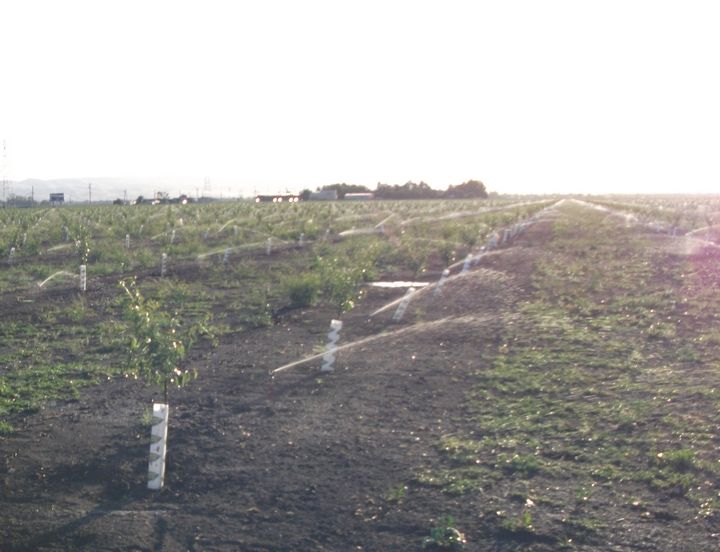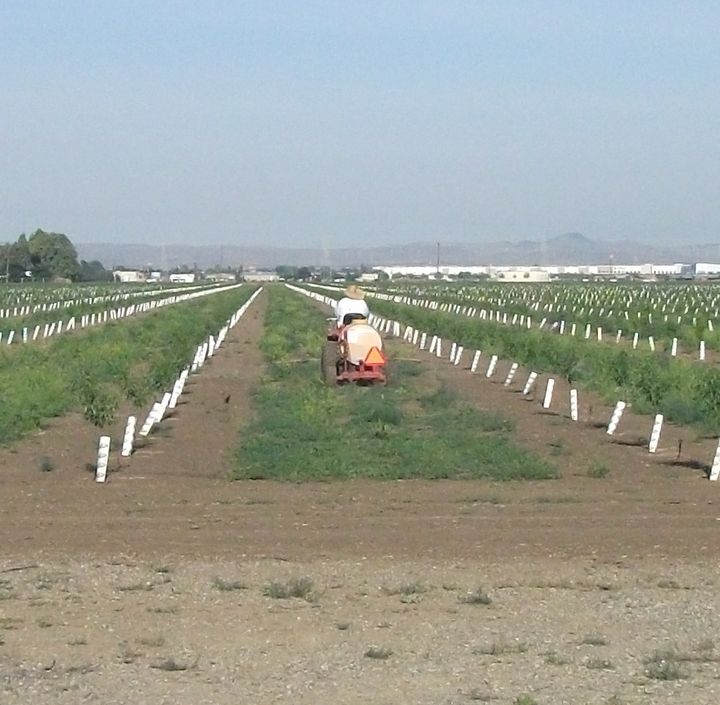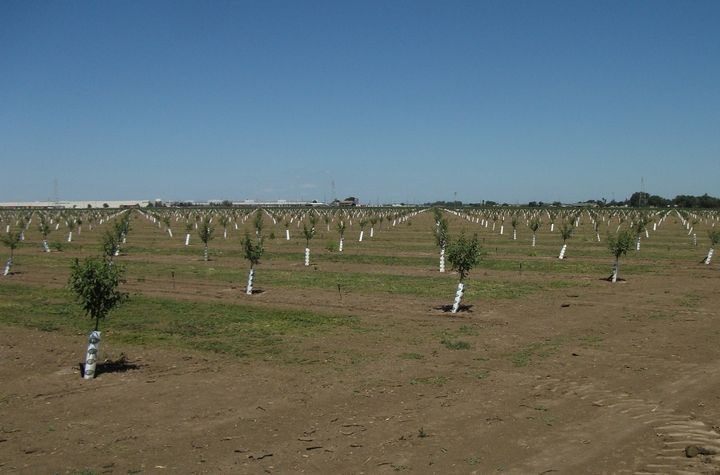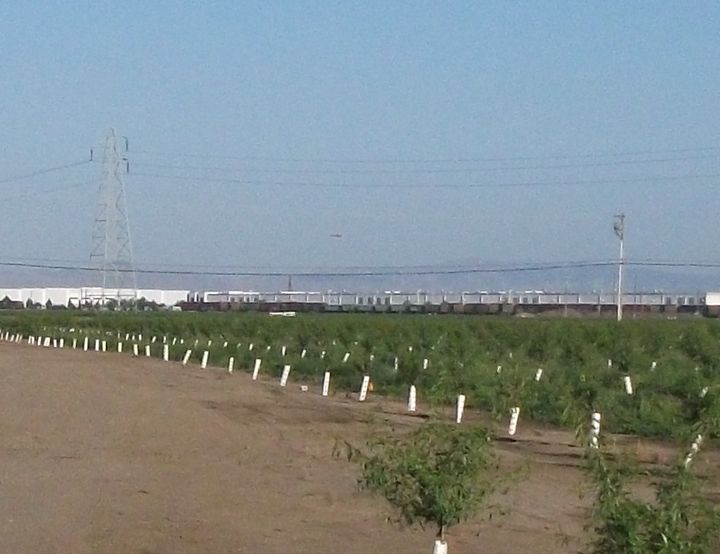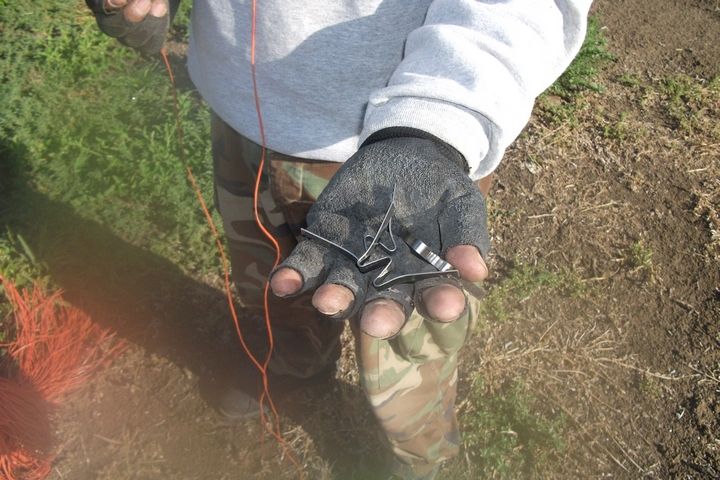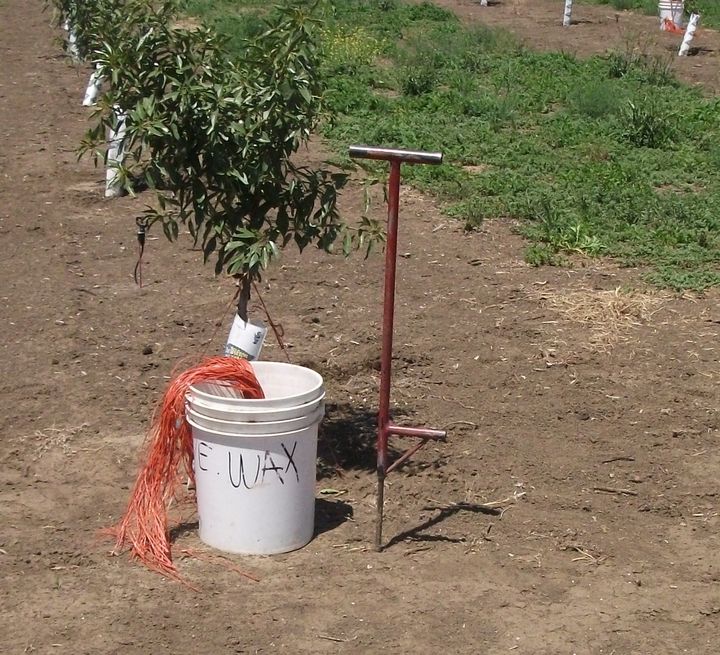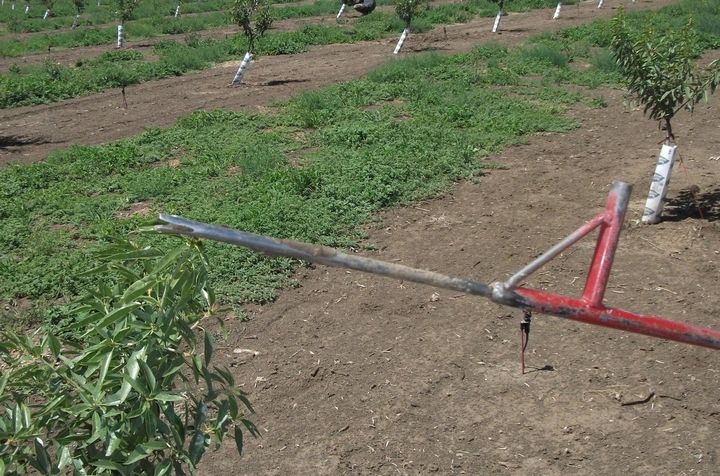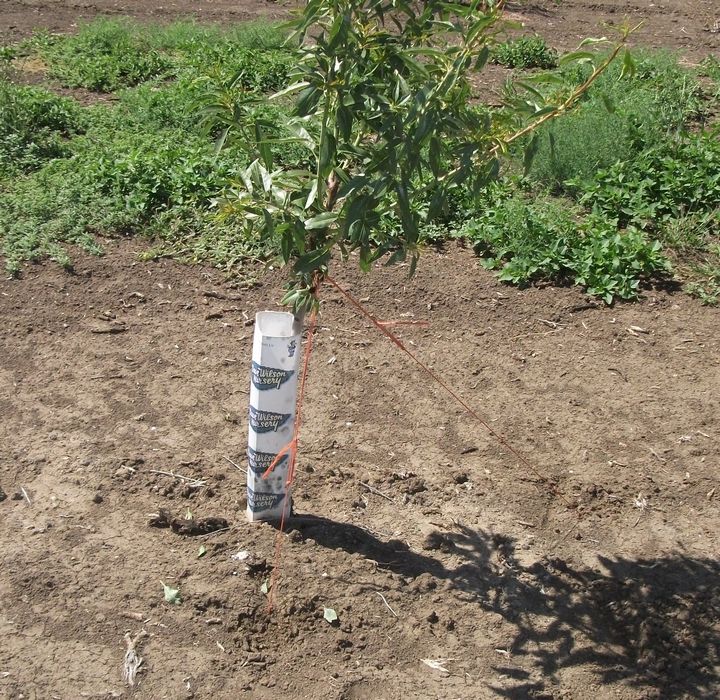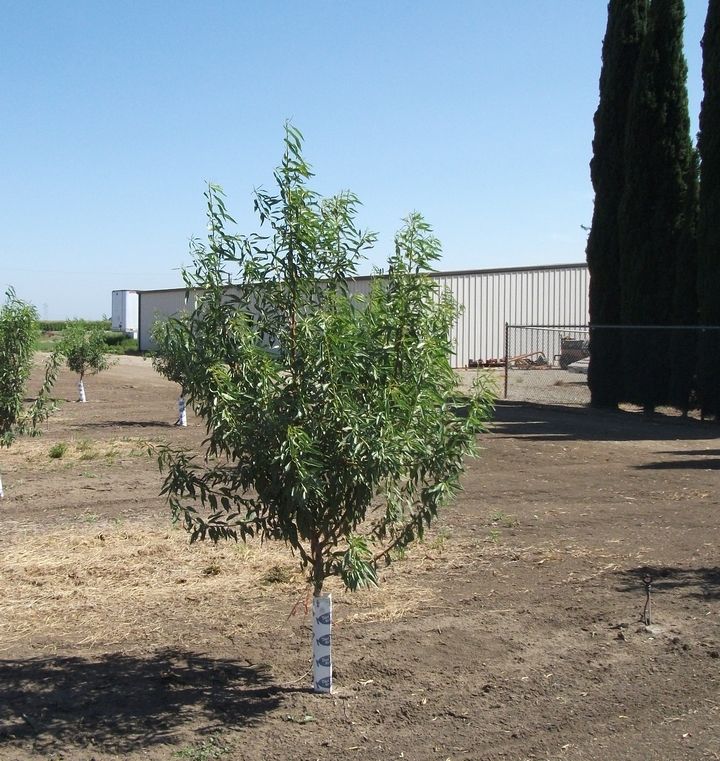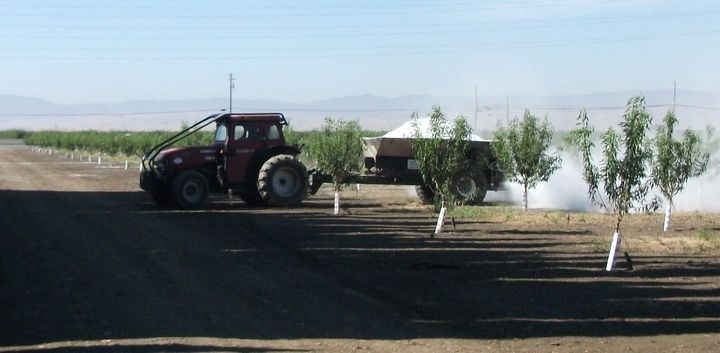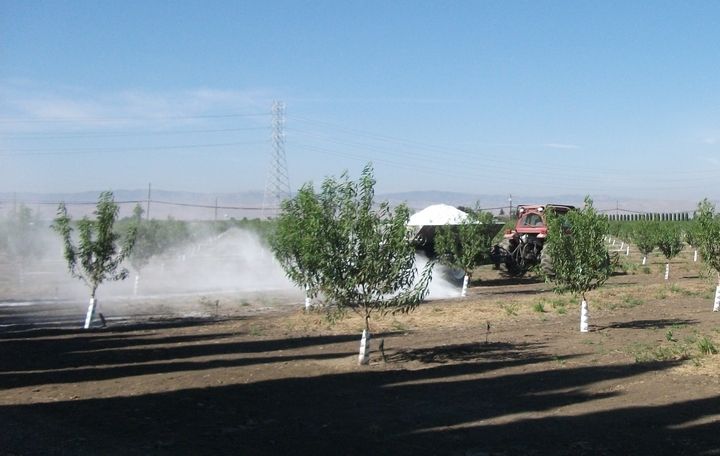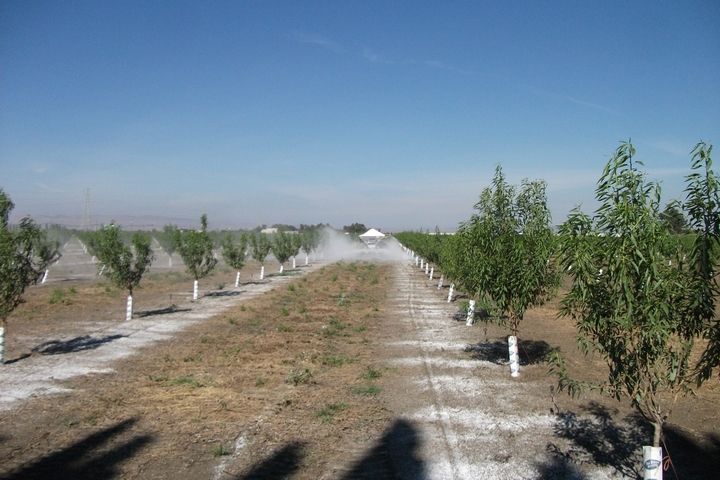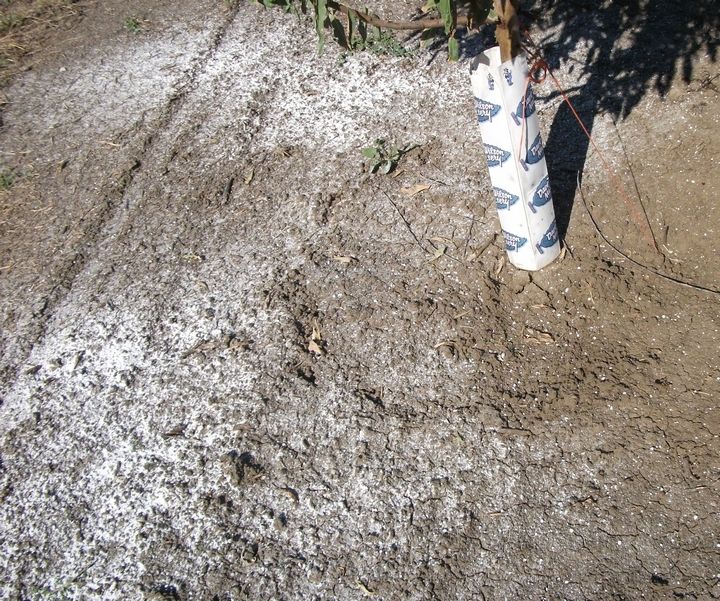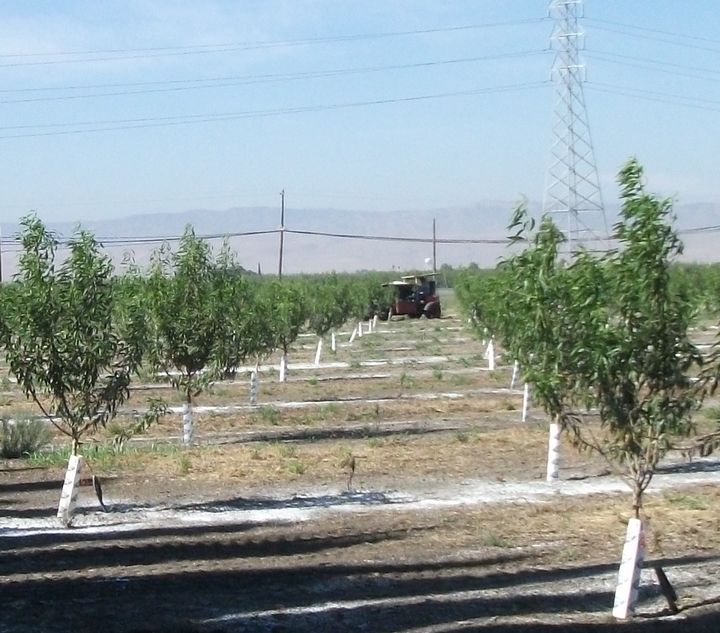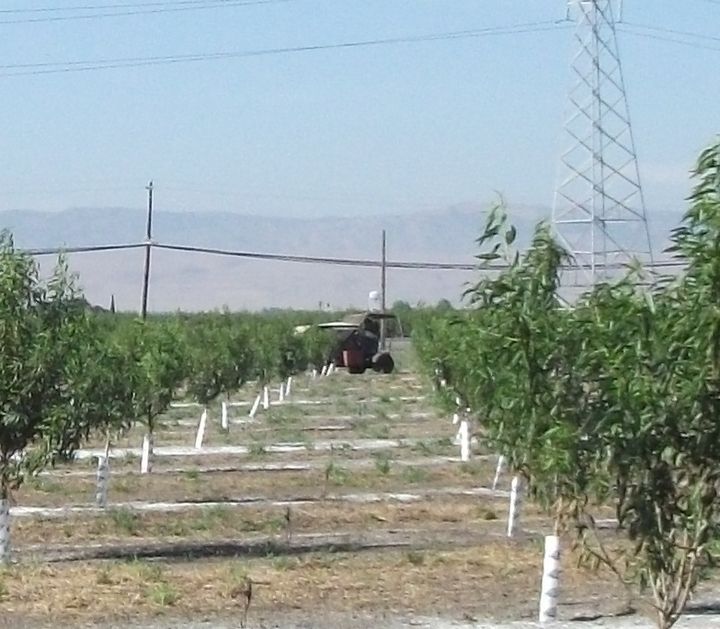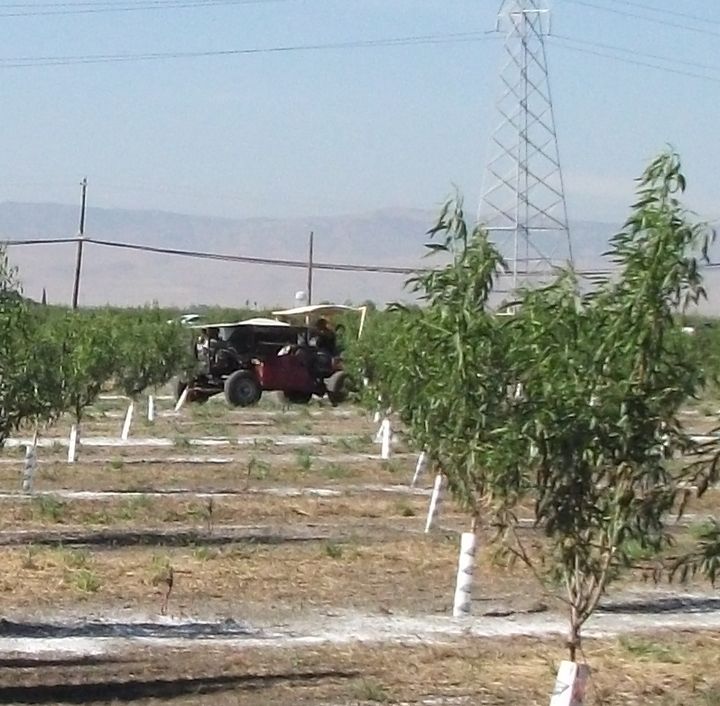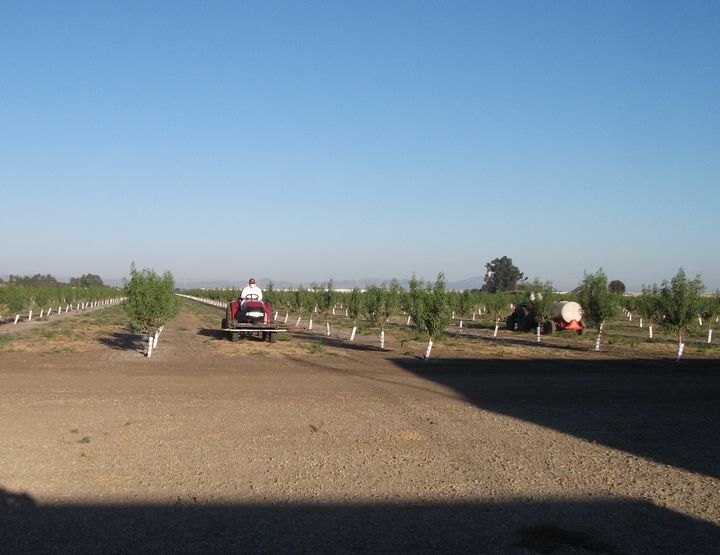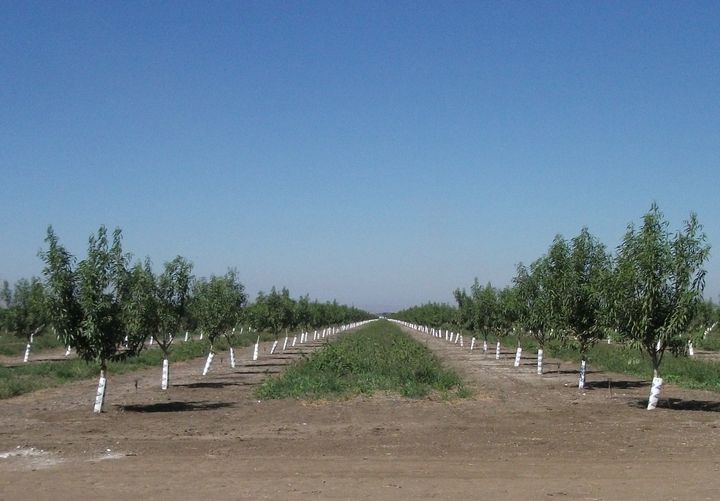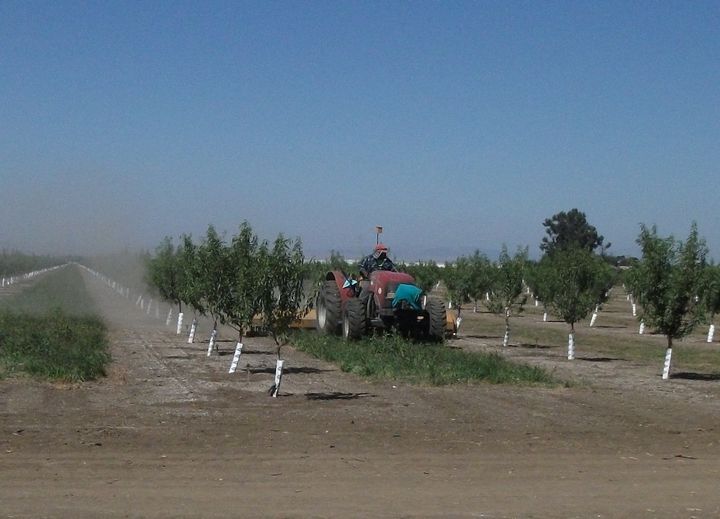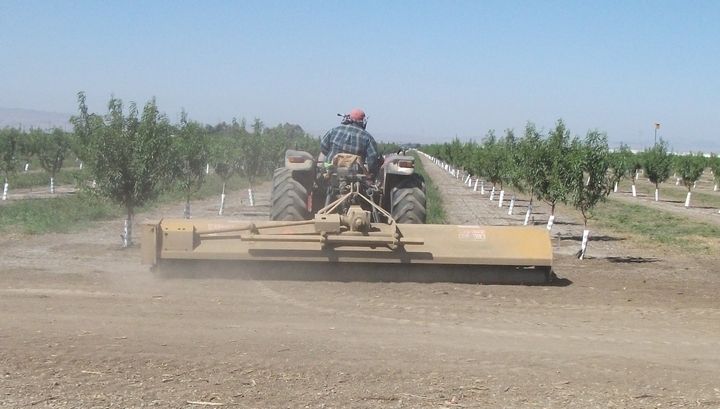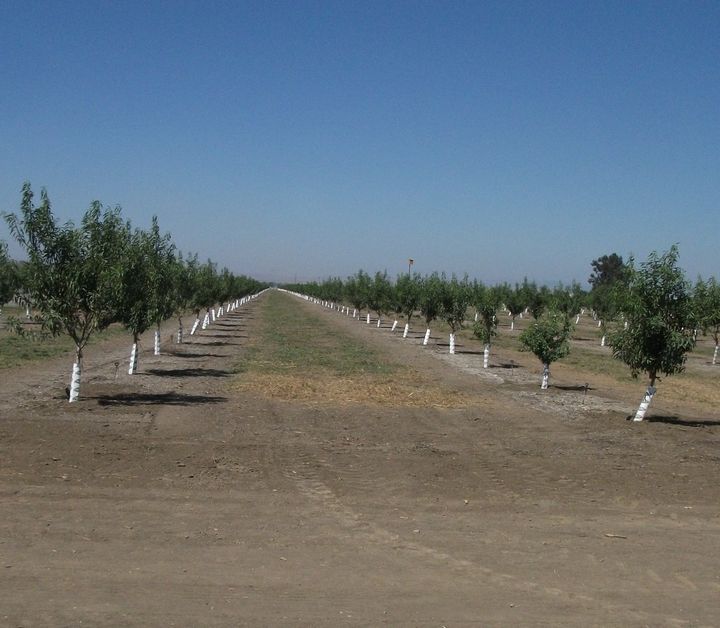usedto
Lunatic Member
Well, I guess necessity IS the mother of invention. Not to make light of the ingenuity, but this whole process of switching from row crops to almond orchard has used some unique and expensive equipment, some of it quite specialized. I noticed earlier in the week that there was a machine running out in the field, but it was too far away to identify. On one of our walks in the morning, we noticed the fertilizer tinder in the yard, then spotted the fertilizer on the ground, directly over the tree's root ball. The gray fertilizer pellets are Triple 15 (15N, 15P, 15K), and are best concentrated at the roots.
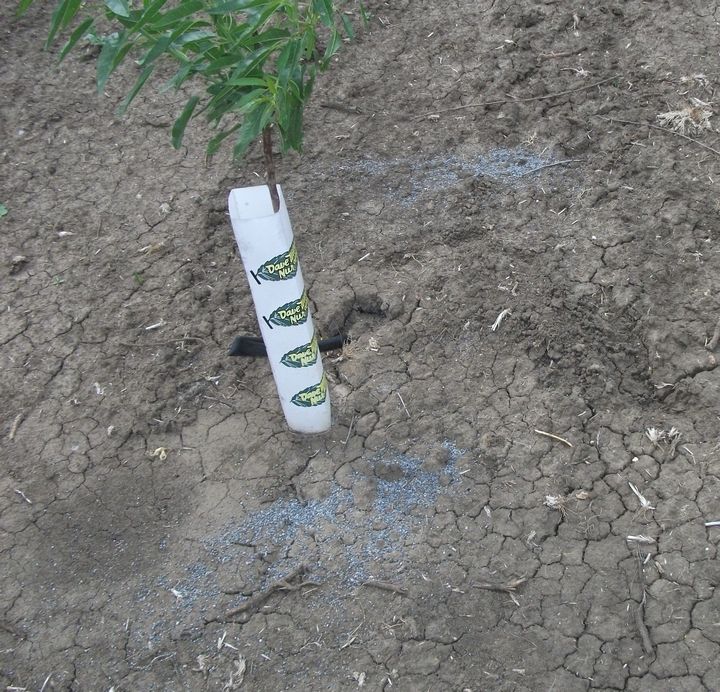
Yesterday, they did the rows directly behind my warehouse, so I grabbed my camera to get a photo. It wasn't exactly what I had envisioned:
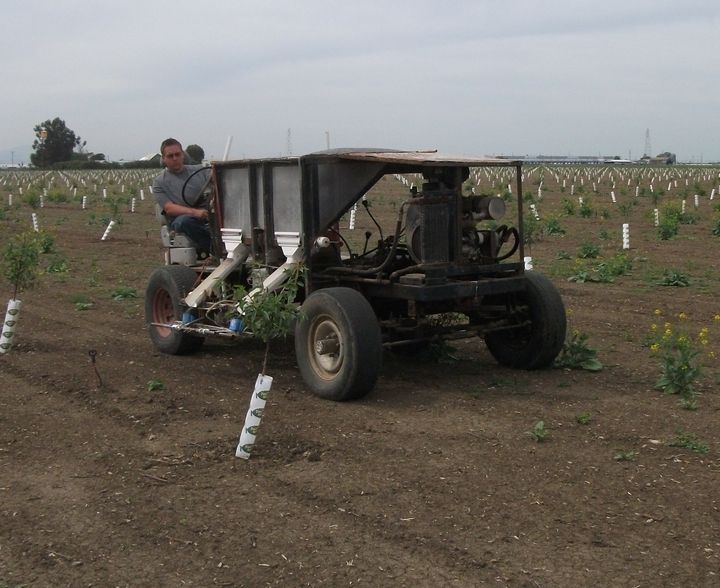
The driver stopped at the end of the row, so I talked to him a bit and took a closer photo:
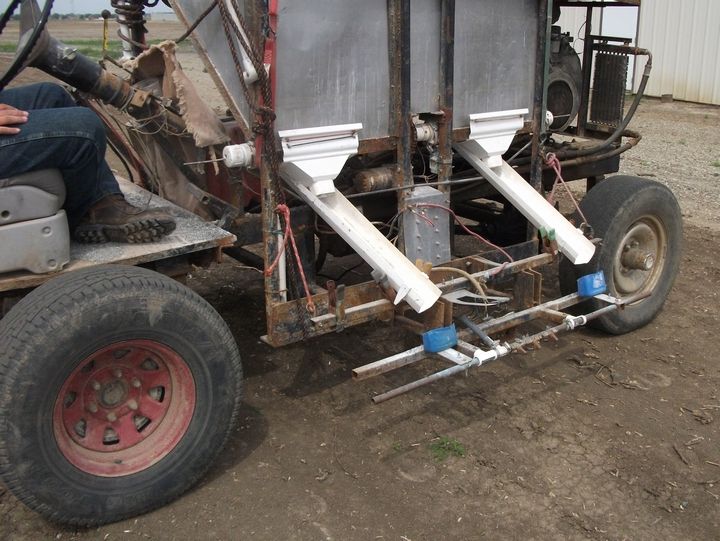
It started off with set of Chevy 3/4 ton differentials (it's 4WD) mounted on a rigid frame. It's powered by a 65 hp 4 cyl. Wisconsin engine. I didn't see how it was coupled to the transfer case, but I imagine the motor drives a hydraulic pump with an orbit motor on the input.
The hopper feeds two chutes that dump the fertilizer into the two plastic anti-freeze jug bottoms that are mounted on a catapult assembly. The driver has a pushbutton, and when the machine is in the proper position, he pushes a button that activated the catapult and dumps the contents at the base of the tree on either side. It's quite the gizmo! And he clips right along, too.
I spoke to a friend of mine who just had his new orchard done, and he says the company that owns/built it is the only one around that has one that can do that job. $12/per acre for application, I believe. That's $3000 to do this field. Sounds like alot, but savings on fertilizer by concentrating in in this manner would easily surpass the cost.

Yesterday, they did the rows directly behind my warehouse, so I grabbed my camera to get a photo. It wasn't exactly what I had envisioned:

The driver stopped at the end of the row, so I talked to him a bit and took a closer photo:

It started off with set of Chevy 3/4 ton differentials (it's 4WD) mounted on a rigid frame. It's powered by a 65 hp 4 cyl. Wisconsin engine. I didn't see how it was coupled to the transfer case, but I imagine the motor drives a hydraulic pump with an orbit motor on the input.
The hopper feeds two chutes that dump the fertilizer into the two plastic anti-freeze jug bottoms that are mounted on a catapult assembly. The driver has a pushbutton, and when the machine is in the proper position, he pushes a button that activated the catapult and dumps the contents at the base of the tree on either side. It's quite the gizmo! And he clips right along, too.
I spoke to a friend of mine who just had his new orchard done, and he says the company that owns/built it is the only one around that has one that can do that job. $12/per acre for application, I believe. That's $3000 to do this field. Sounds like alot, but savings on fertilizer by concentrating in in this manner would easily surpass the cost.



